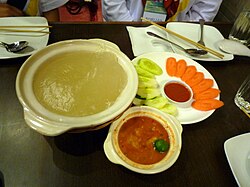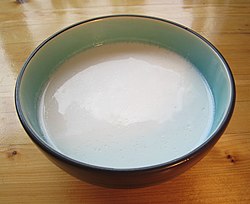
Bruneian cuisine concerns the cuisine of Brunei. It is similar to, and heavily influenced by the cuisine of neighbouring Malaysia, Singapore, [1] and Indonesia, with additional influences from India, China, Thailand, and Middle East.[ citation needed ] As is common in the region, fish and rice are staple foods, though beef is expensive and thus less common. Due to the predominance of the Islamic religion, the food is halal and pork is avoided. Alcohol is banned in Brunei. [1] In rural areas, game animals such as wild birds, sambar deer, and barking deer are hunted.
